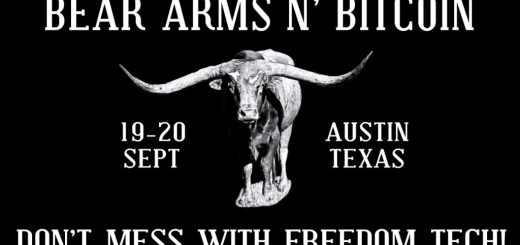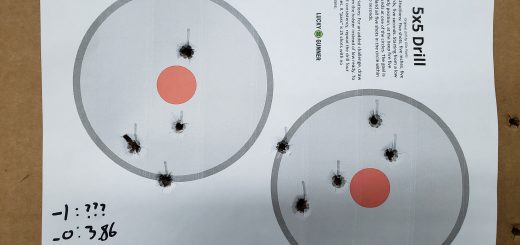The Rise and Fall of the Ubiquitous Mosin Nagant
In 2008, my father took me down to Keene’s Smoked Ham Depot to buy me my first firearm. Upon walking in the door, he gave me three choices: a Gewehr 98 that looked as if it had only recently been dredged from the mud of the Marne, a Hi-Point 995TS carbine, or one of the Mosin Nagant rifles had just arrived from their distributor. Seeing as Call of Duty: World At War had just released the prior month and my love of World War II had awakened again, I decided to dig through box after box of Mosin Nagants until I found one that piqued my interests. After that, it was $80 with a background check and out the door my father and I went.
Last year I went back to Keene’s with my father, now in a different location and known first and foremost as KYGunCo, and I was perturbed by the fact that they had not a single Mosin Nagant in their entire arsenal. Once a rifle that catapulted them out of obscurity, the Mosin Nagant was now walking down the path which the company had come from. Why is that, you might ask? I believe I can shed some light on the situation.
First and foremost, the Mosin Nagant’s illustrious era was propelled on the simple fact that the rifle was cheap both to purchase and to shoot. When they first flooded the market like Soviets soldiers crossing the Volga, they could be found on practically any gun shop wall for under $100 often coming with a free spam can of 440 rounds or with a discount coupon that made the 7.62x54mmR rounds cheaper than the 19¢ per round that they commanded at full market value. As time went on the Mosin’s price rose until around 2012 when the price increased by almost double what was being asked of it due to the Sandy Hook Massacre. Since then, the price has only continued to rise exponentially. When I bought my final Mosin in 2012 the price was almost $250 after the background check, but at the most recent gun show I saw people not only asking for $400, but getting it, disturbingly enough.
But it wasn’t just the rifle itself that rose, the ammunition for the rifle itself has become increasingly hard to find as well. In 2013, the Euromaidan protests in Ukraine caused a government upheaval that led to the 2014 annexation of Crimea by Russia and a Russian-backed separatist movement in the East. Ukraine, the largest exporter of 7.62x54mmR in the world, almost immediately ceased all sales and shipments of the ammunition as they suddenly needed it to fight a war which they are still fighting to this day. While surplus ammunition has trickled in here and there, it’s nowhere near as easy to find as modern-production commercial ammo and often commands the same price of 60¢ per round.
To couple with this fact, Mosin Nagant variants are also disappearing from the market. Years ago you could walk into virtually any gun show and be overwhelmed by the number of rifles labelled as Mosin Nagants that you had never seen before only to learn that the two are intrinsically related. Even though the market for variants lasted slightly longer than the regular 91/30 market, it too eventually sputtered out leaving a void at gun shows which was soon filled by cheap Chinese clone optics and accessories for railed firearms. Long gone are the days of M44 and Type 53 carbines and the next variant to join the graveyard is likely to be the Finnish M39, meaning that snagging a more unique Mosin rifle will go back to being a collector’s game in the next year or so.
Another major factor in the death of the Mosin’s popularity is the dropping prices of AKs, ARs, and semi-automatic surplus rifles. In a world where Mosins are fetching over $300 with ammunition costing over half a dollar a round, why would anyone bother buying one when you can get a Yugoslav SKS for as cheap as $350 and shoot 7.62x39mm as cheap as 18¢ per round? Why get an old-bolt action rifle when you can assemble a PSA AR for a little over $400, or just buy one of the many lower-end ARs like the Ruger AR556 for around $450? Hell, these days you can find quality AKs for as cheap as $650 if you still want to go the more expensive Com Bloc route.
While it’s obvious that the Mosin cannot compare to other rifles in it’s price range today, you might still wonder if it’s even comparable to other rifles from it’s era, and the answer to that is a resounding no. The Mosin Nagant is definitely cheaper to feed than similar weapons such as the Carcano, Lee Enfield, and Mauser, but it is still more expensive out of the gate, is less pleasant to shoot, and is far less accurate than its counterparts. I’ve had three Mosin Nagants over the years and shot plenty more at /k/ meets, yet they cannot hold a candle to other rifles from the era from almost any standpoint.
Why is this, you might ask? By far the most common reason for this is that the majority of Mosin Nagants are poorly done Ukrainian post-war refurbished rifles. These rifles have poorly repaired or even force-matched parts. For range use this is fine, but after a handful of rounds these rifles will become harder to operate and will require more force to work the bolt, which isn’t something easily done because the Mosin has poor heat dissipation which means you’re going to be caught in a battle between unlocking the bolt and burning your hands and getting you’ve ever loved covered in molten shellac. When I picked out my first Mosin, I was fortunate enough to grab a Russian refurbished rifle and while it is far superior to your standard Ukrainian hack job, it’s still not something I would be confident wagering a bet against any proficient shooter with a Mauser in a marksmanship challenge.
At the end of the day, the Mosin Nagant is a tired old rifle that has fought in every battle since the Philippine Revolution in 1896 and created a booming market in the late-aughts of the United States gun market. Once a staple gun for every /k/ommando, fudd, and newguns alike, these rifles have returned to the cosmoline crates they packed away in until once again they are needed in war, in peace, or innawoods. They’ll never be the greatest weapon on the market as they were once portrayed to be, but they’ll put a big hole in a small target at a commendable distance.









